Thanks to NSU
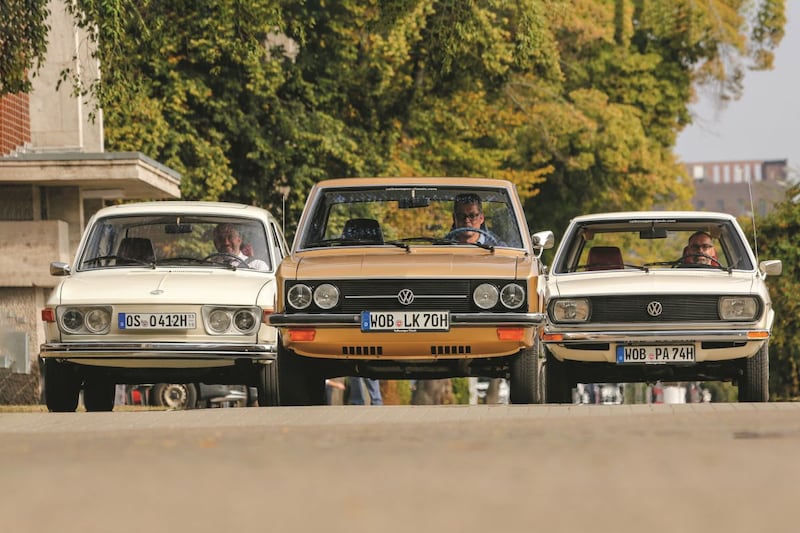
Volkswagen launched a front-engine car for the first time in 1970. The pathfinder for the great turnaround is not our own development, but an NSU with a Volkswagen emblem. The very modern K70 made Volkswagen’s relatively young 412 very old-fashioned at once and then there was the Passat, which was actually an Audi 80. It is indicative of the transition Volkswagen was in during that period. We bring the three cars together to tell the story behind this turn of events.
Volkswagen’s technology is outdated and a modern model is available, but company management refuses to accept the change. The year 1970 in Wolfsburg is a time of revolutions and a time of conflict: the boss of the company announces the end of all dogmas and the angular and modern K70 rolls into the Volkswagen showrooms, but at the same time the Volkswagen 411 remains part of the model range. The brand even continues to develop the model into the 412. It is a typical Volkswagen and the engineers from Wolfsburg simply could not let go of what they were so proud of two years earlier: a self-supporting body, a modern suspension and more powerful engines. bringing Volkswagen’s flagship into the upper middle class. It is also the brand’s first passenger car with four doors. Nevertheless, it was not a sales success, although the Variant models gave sales a boost: a total of only 367,728 copies rolled off the production line between 1968 and 1972; the 412 quietly disappeared from the range in 1974 after two years.
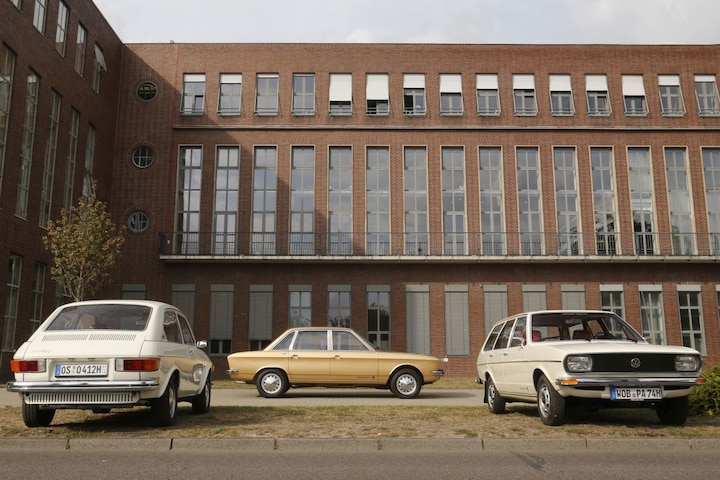
Volkswagen 412 gives a feeling of space
In our pastel white 412 LE in which we go out, the door closes firmly and the interior smells like any old Volkswagen: a mixture of old plastic and floor mats. The leatherette-covered seats are comfortable and the lack of a center console gives a feeling of space that is lacking in modern cars. The mix of wood-look panels and gray carpets provides a certain degree of coziness. The dashboard provides the most necessary information with a speedometer, a clock and a fuel gauge, nothing more. Who will also see a few robust, Beetle-like switches and the indicator lever on the steering wheel is reminiscent of the cutlery in a Chinese restaurant.
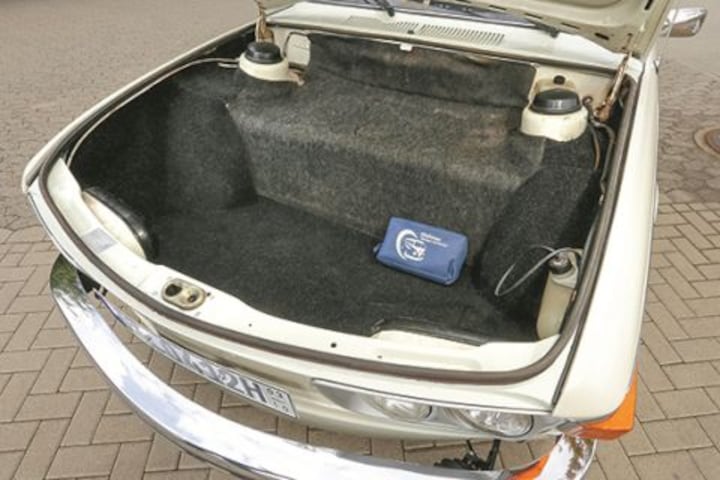
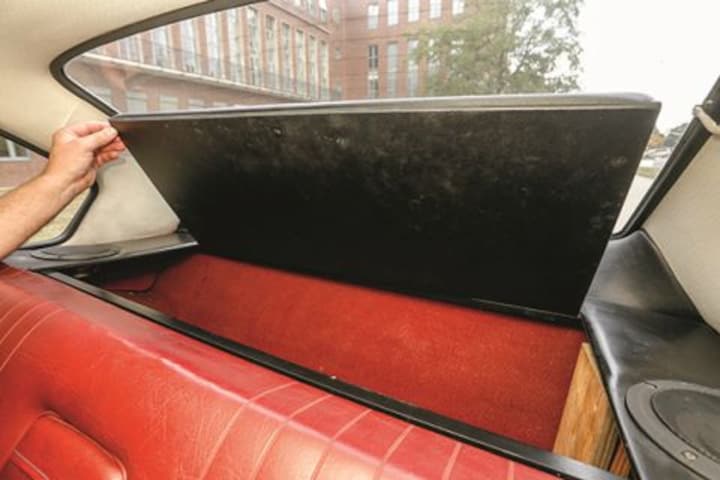
The two luggage compartments require knowledge of Tetris. There is a relatively large amount of space at the front and, in the old Volkswagen tradition, there is a storage space behind the rear seat that is difficult to access.
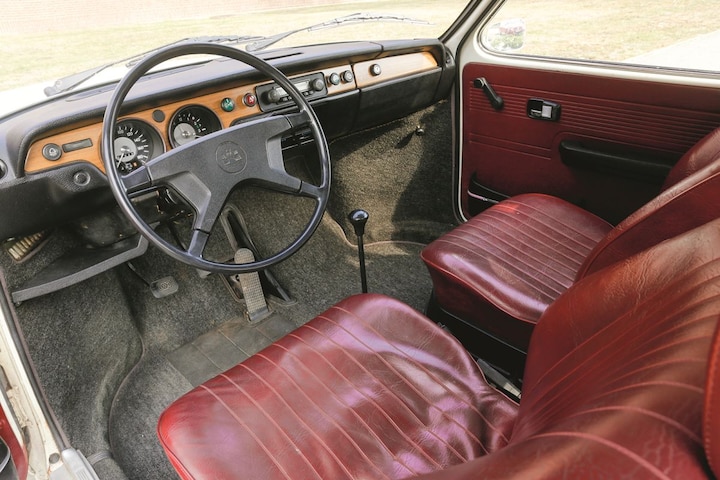
The sound is striking, with a robust touch. Four cylinders thrash away in the rear and produce a pleasant background noise with a displacement of 1.7 liters and an injection system. The boxer engine sounds less intrusive than in the Beetle, but it has more meat on the bones and is considerably more powerful with 80 hp. The boxer engine stimulates the senses and enthusiastically propels the large Volkswagen forward. A top speed of 155 km/h is possible, but you don’t want to push it to the limit because of fuel consumption. At the time, Volkswagen stated a consumption of 12.5 liters of petrol per 100 kilometers, or 1 in 8, but 14 liters (1 in 7.1) is more realistic. The gearbox is not very precise; at most, first gear is about where you expect it to be.

The turning circle is remarkably small at 11.8 meters, although the steering requires some arm muscles due to the lack of power assistance. Even then, however, the 412 only changes course when it feels like it. Braking is even more challenging: real anticipatory driving is a necessity, because there is no power brakes. Overall, the 412 is fun to drive: it sounds great, is easy to drive and thanks to the modern chassis, it doesn’t surprise you with tricks. In principle it is a sympathetic classic and quite a successful design, but the car was already technically outdated at its conception.
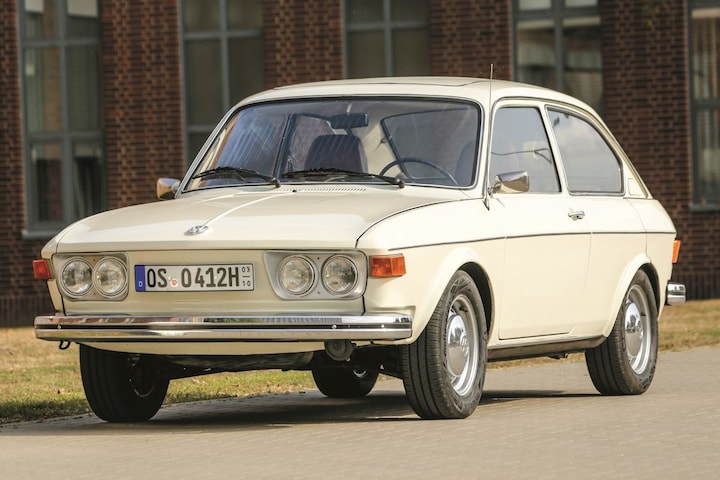
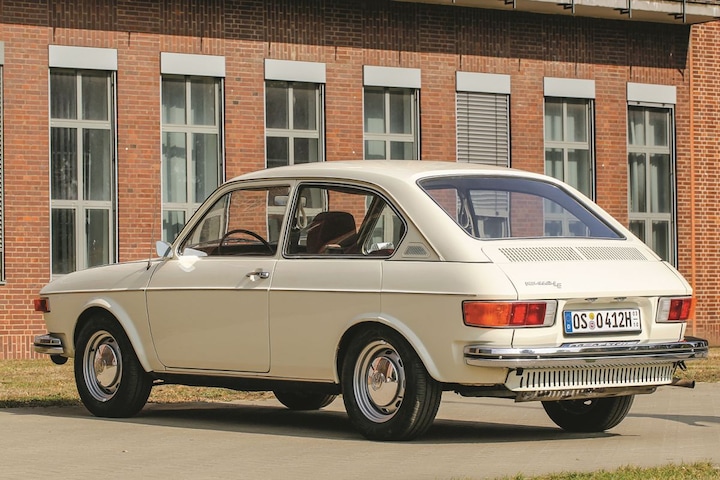
Volkswagen K70 was a kind of dowry
“There is no technical dogma at Volkswagen,” general manager Kurt Lotz makes clear more than two years after the death of his predecessor Heinrich Nordhoff when he addresses the shareholders in July 1970. “Every technical concept has its value in the company, as long as it is suitable for gaining a position in the market.” In doing so, he appeals to both traditionalists and modernists, but the clear direction that would be possible and necessary with the K70 is missing.
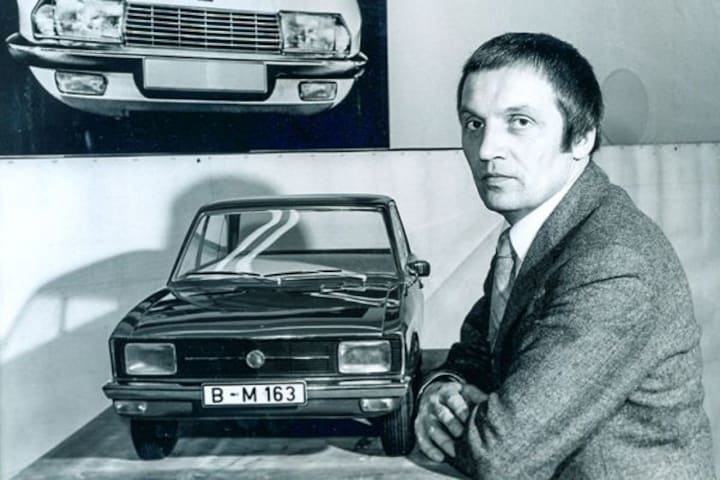
The Volkswagen K70 was designed as a model below the Ro 80.
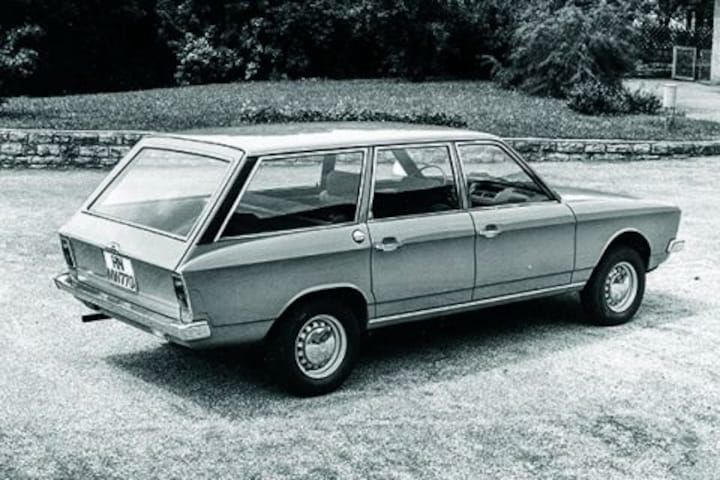
NSU K70 prototype of a Variant that never came.
K70 arrived too late to save NSU
The model was designed by NSU as a model below the Ro 80, but arrived too late to save the company. The K70 is therefore a gift for the buyer of the brand, Volkswagen. You could call it a kind of dowry. Volkswagen adds the newcomer to its model program unchanged, with the model name remaining intact. The K stands for ‘Kolben’, the German word for pistons, where ‘Ro’ referred to the rotating piston; the number 70 should indicate the model hierarchy. Strangely enough, Wolfsburg isn’t promoting the sedan as a breakthrough.

With its exterior in Mayan metallic color and blue velvet interior, the K70 we tested looks so modern that it is hard to believe that the model is already more than fifty years old. With its large windows, it has a modern shape, but above all it is spacious, including the footwells, thanks to the water-cooled four-cylinder in-line engine placed in the front.

The dashboard with its clear instruments is noticeably far away from the driver. If you want to start the engine or operate the radio, you have to lean far forward. The high seating position, the lots of glass and the angular body make the K70 a boon in terms of all-round visibility, especially compared to the 412. Once the driver has found first gear – the gearbox does not make that easy – the 1 .8-liter with its power of 75 hp for a decent drive.
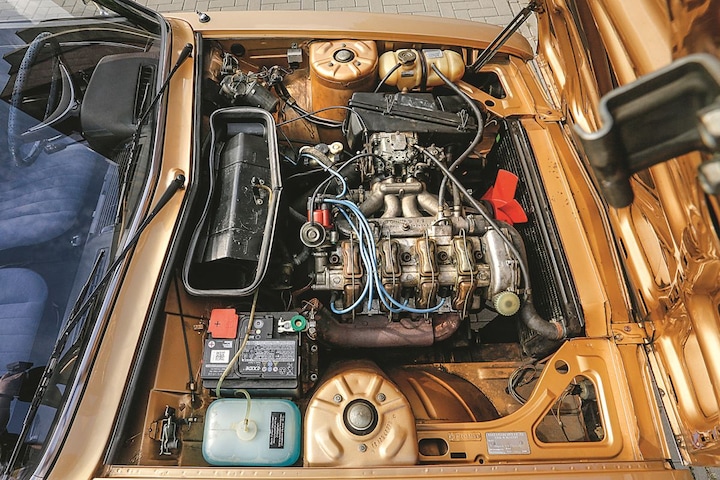
The suspension is pleasant, but in the first bend it becomes clear that the non-power rack and pinion steering requires good condition. McPherson struts with triangular wishbones at the front and a torsion beam at the rear ensure safe cornering behavior. The braking system is modern, with rear drum brakes and front disc brakes taken from the Ro 80. These are mounted on the inside of the wheel to simplify maintenance.

K70 is a stepchild for Volkswagen management
All in all, the K70 is a nice travel car. Speaking of traveling: a station wagon had also been developed, but it will not go into series production so as not to get in the way of the 411/412, which is also available as a Variant. For the Volkswagen management, the unloved K70 is a stepchild of other parents. The same fate could have made life difficult for the Passat, because that model was in fact a slightly modified Audi 80 when it debuted in 1973. Rudolf Leiding, who took over as head of Volkswagen in 1971 after three years as Lotz, had previously worked at Audi. He not only brought this car with him from Ingolstadt, but also the ambition to push the model through with a few changes in the ailing Volkswagen group.

Passat is almost graceful
The sloping rear that is popular with Volkswagen drivers and the angular headlights make the Audi a Volkswagen. As such, Wolfsburg has been passionately marketing the Passat since 1973, in a way that was never the case with the K70. Our atlas white Passat is one of the first Variant models. At first glance, it looks almost graceful compared to today’s station wagons. The fragile impression persists once you have taken a seat on the comfortable seats and closed the thin door. Everything inside feels well organized and the few instruments quickly speak for themselves. The four-cylinder engine with a displacement of 1.3 liters sounds as modest as its performance: the 55 hp gets the Passat, which weighs just under a ton, moving surprisingly effortlessly. The clutch operation takes some getting used to: it not only engages late, but also abruptly.
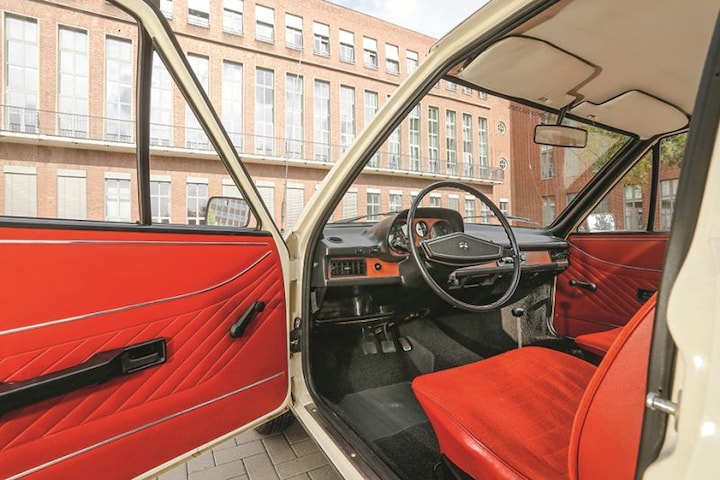
The noise production is acceptable, even at higher speeds. When steering, without power steering, it becomes clear that you can guide the Passat through the bends with relatively little effort. In general, the Passat, which is named after an equatorial wind known for its stability, makes a well-organized and well-thought-out impression. Only the somewhat cheap plastic in the interior takes away some of the charm of the Volkswagen.

Compared to the K70, it is clearly positioned half a class lower and in retrospect that may partly justify why Volkswagen did not really embrace the K70. It would not have been so perfectly positioned, although the price difference between the two models was not huge at the time. In any case, one thing is clear: although the 412 is solidly constructed, from a purely practical point of view it is inferior to both its successors. The fact that it took the executives at Volkswagen a number of years to realize this and draw the conclusions from it is, in retrospect, one of the biggest mistakes in the history of the car industry.
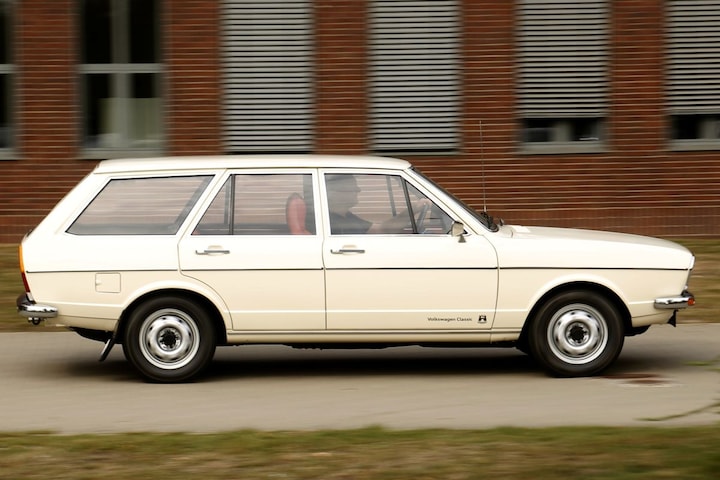
Wonderful actually, from today’s perspective. In 1974, Volkswagen delivered no fewer than three models in roughly the same segment, with two very different concepts. And only one of them has a bright future: the Passat. However, the Volkswagen 412 is the most fun to drive and offers the most classic feeling. The K70 and the Passat, on the other hand, almost seem boring with their modern concepts. Nevertheless, both have their right to exist as classics.
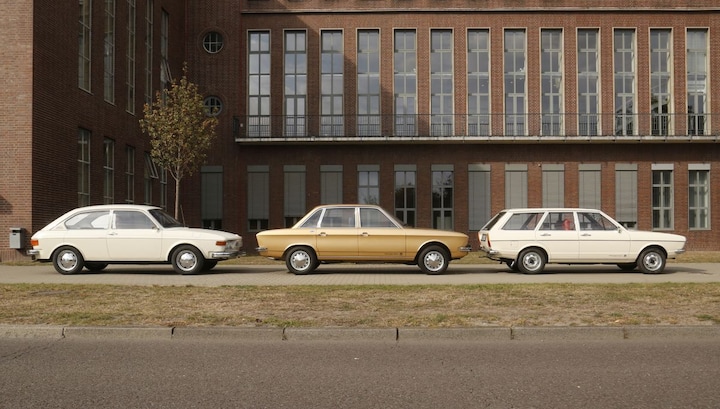
This story was previously published in AutoWeek Classics 3 2024.
– Thanks for information from Autoweek.nl